| Author |
Message |
    
gary lauer
New member
Username: mark20h
Post Number: 1
Registered: 08-2010
| | Posted on Sunday, August 01, 2010 - 03:03 pm: | 




|
This engine snuck into my pickup while I was at the junk yard getting rid of scrap aluminum. I think the flywheel may not be original. any help would be great. Thanks Gary
http://rides.webshots.com/album/578208246aBMSzc |
    
Dennis Hart
Advanced Member
Username: sinbad
Post Number: 36
Registered: 07-2005
| | Posted on Sunday, August 01, 2010 - 05:55 pm: | 




|
Mystery marine engine. Am I being optimistic, does it have characteristics similar to my Sintz but on a smaller scale? |
    
RichardDurgee
Senior Member
Username: richarddurgee
Post Number: 2435
Registered: 11-2001
| | Posted on Sunday, August 01, 2010 - 09:08 pm: | 




|
*
Gary
I originally thought this engine to be a Straubel,many similarities but also some differences ?? It is an old and interesting Marine Engine !
I was away and trying to research it with a limited lap top. The Webshots site does not allow downloading of its photos that makes comparisons difficult ! possible to email the photos to me I'll also post them here ?
[email protected]
* |
    
RichardDurgee
Senior Member
Username: richarddurgee
Post Number: 2436
Registered: 11-2001
| | Posted on Monday, August 02, 2010 - 02:00 am: | 




|
*
Gary's Unknown Marine Engine photos
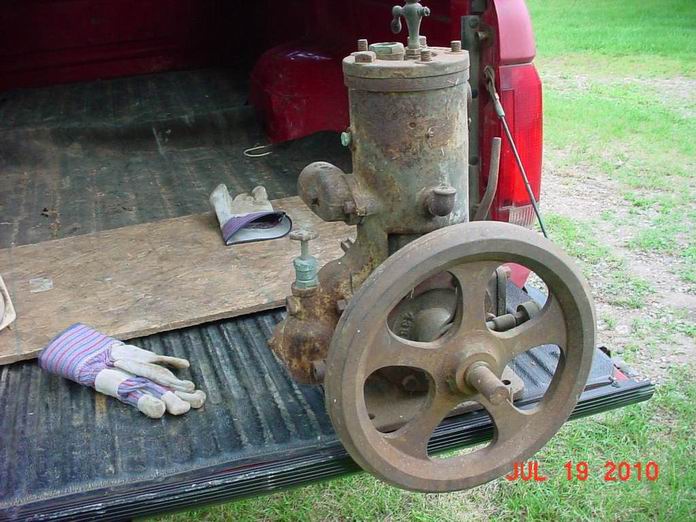
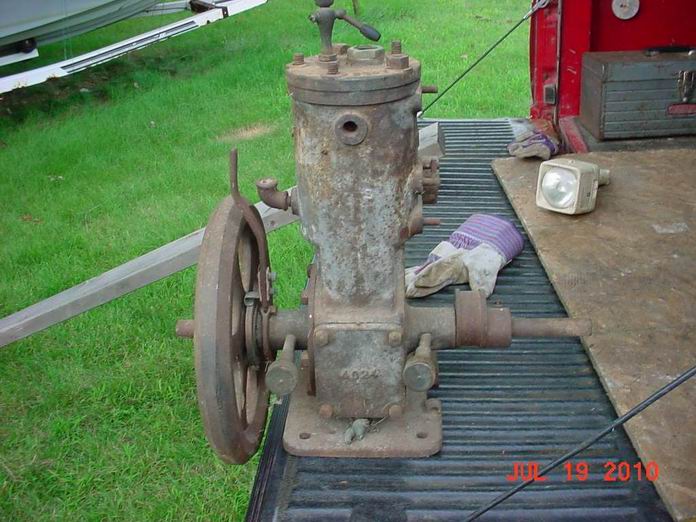
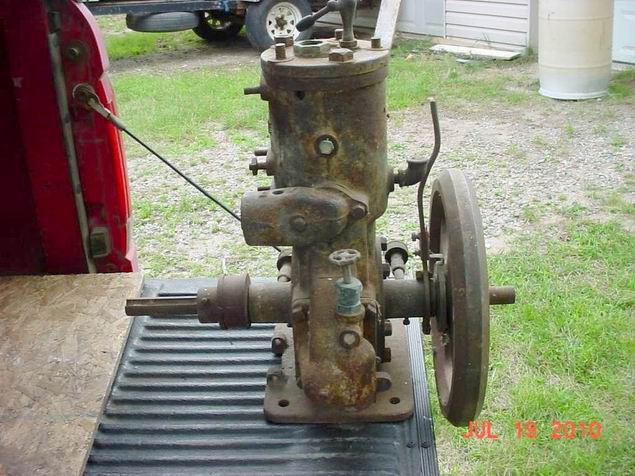
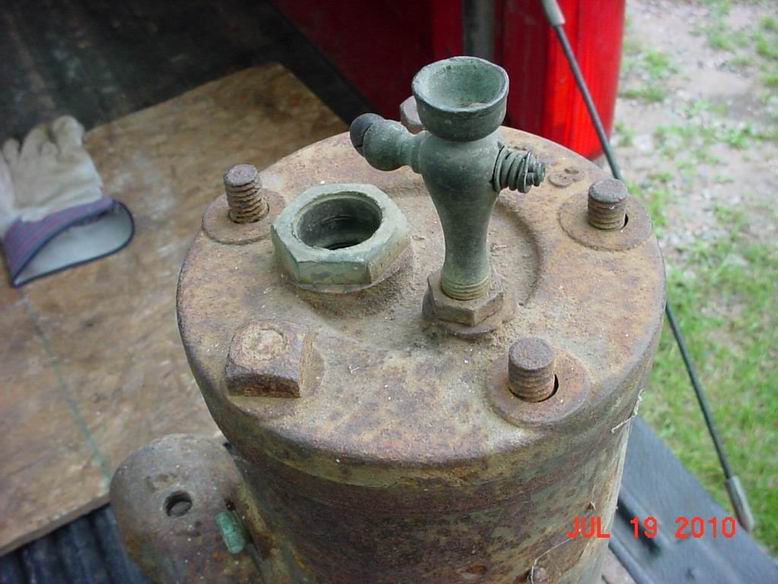
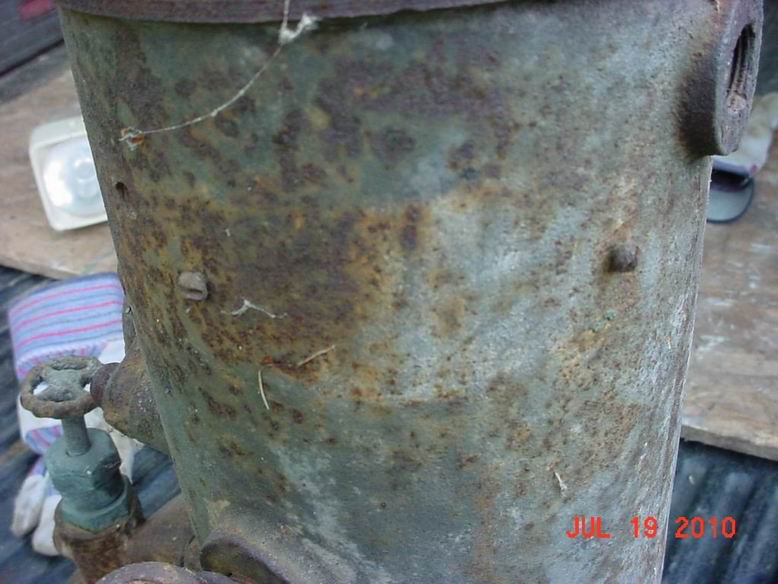
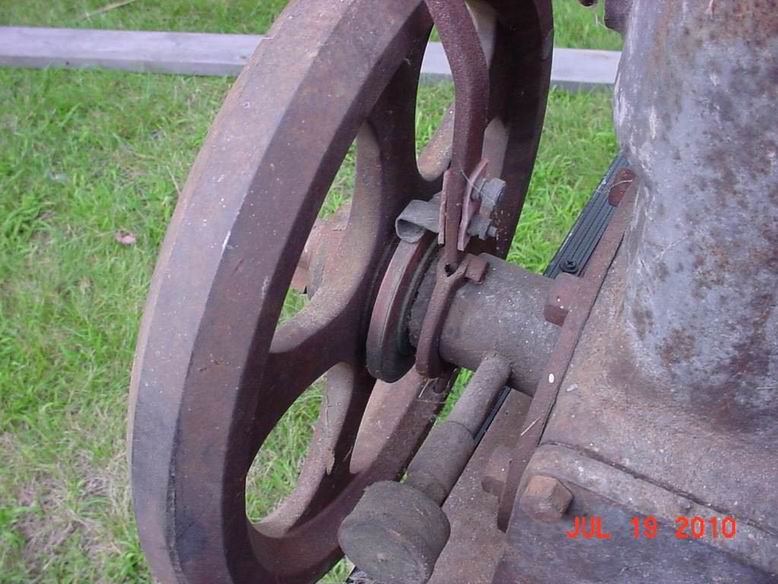
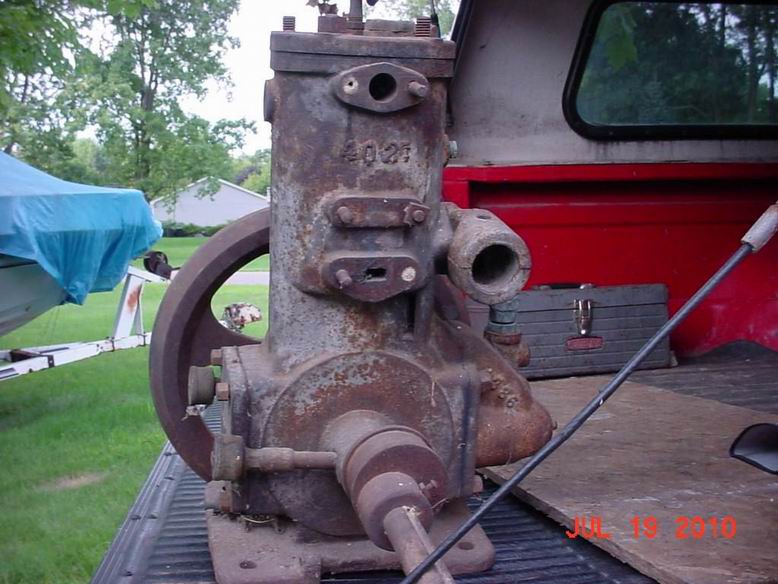
* |
    
RichardDurgee
Senior Member
Username: richarddurgee
Post Number: 2437
Registered: 11-2001
| | Posted on Monday, August 02, 2010 - 07:57 pm: | 




|
*
More of Gary's photos
Pics of the poppet carb and the step on the bore.
The pencils are in the air intakes. the piston at tdc is a little less than 2 1/2 inches from the top of the cylinder
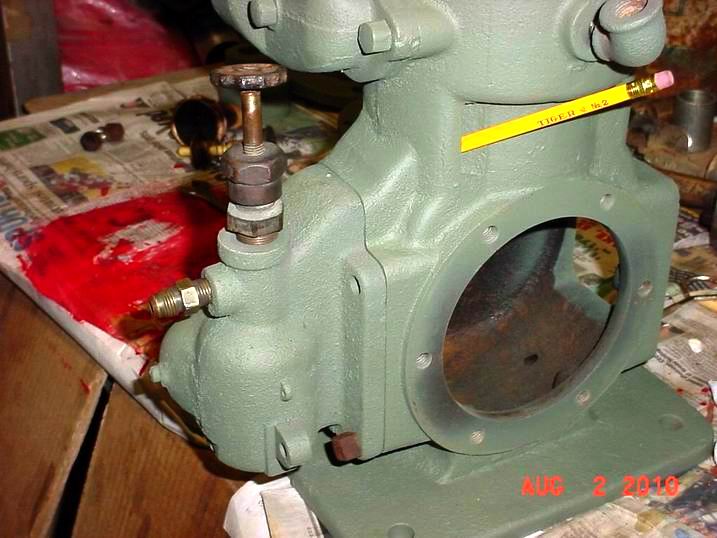
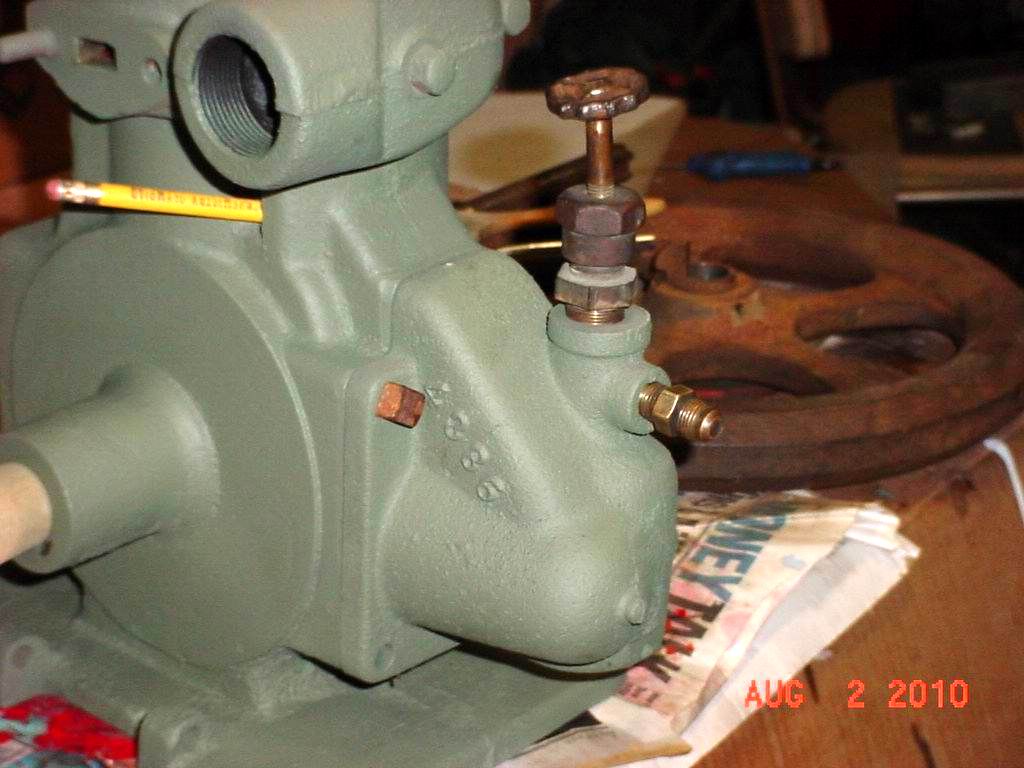
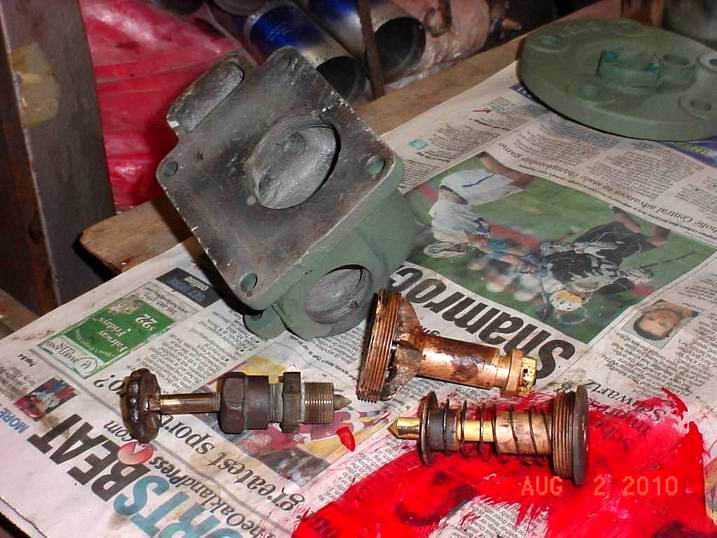
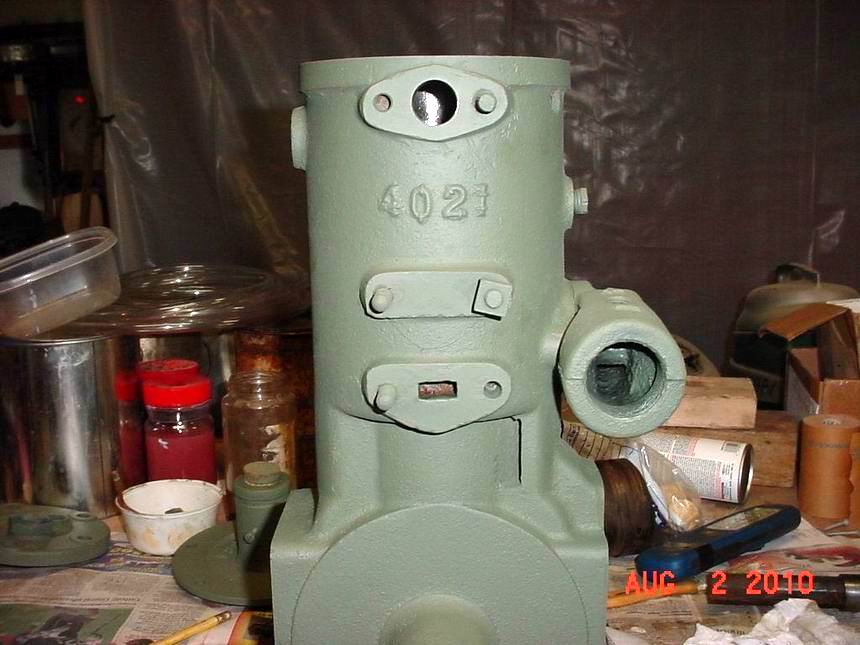
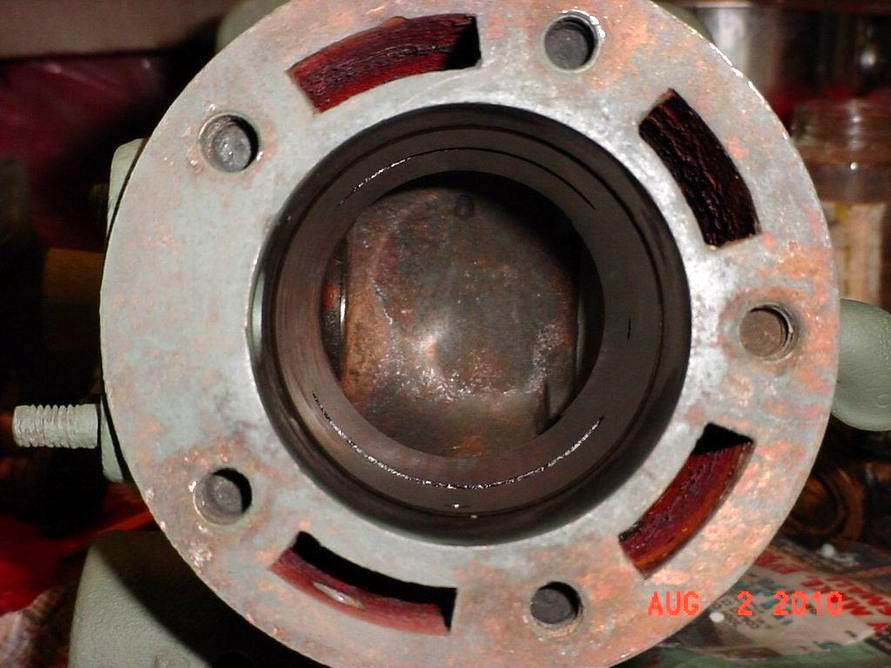
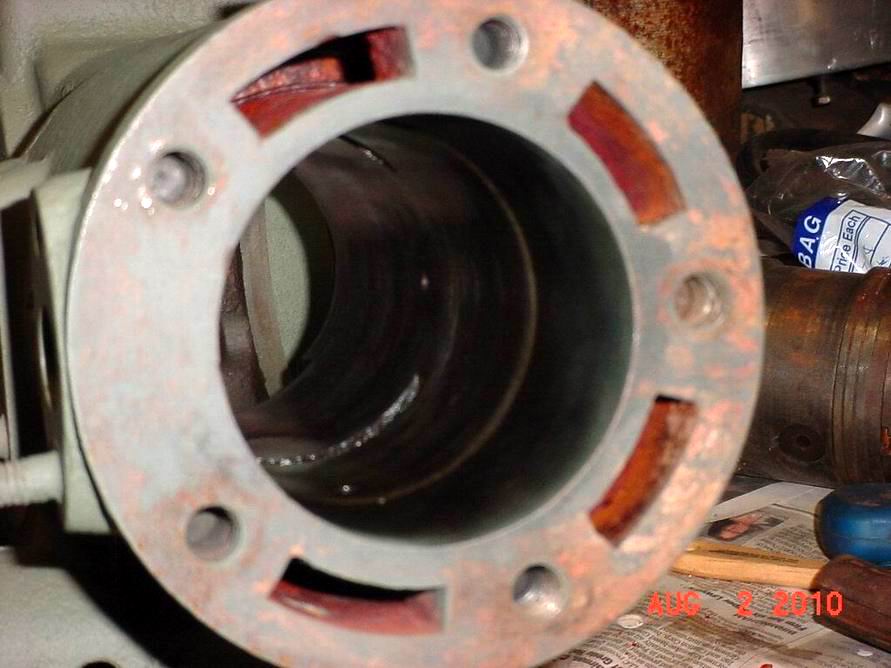
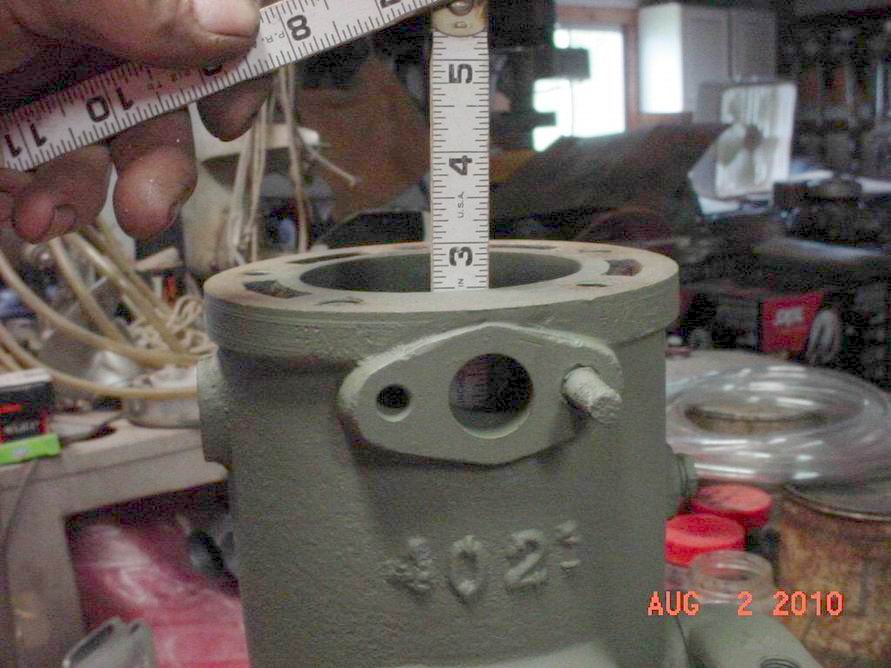
* |
    
RichardDurgee
Senior Member
Username: richarddurgee
Post Number: 2438
Registered: 11-2001
| | Posted on Monday, August 02, 2010 - 08:24 pm: | 




|
*
Anyone seen an old two cycle engine with the cylinder bore above the piston at TDC larger than the piston bore ?? A stepped bored cylinder ??
Anyone seen a flywheel like this ??
Does it look like it had a water/pump - make and break mechanism on the aft originally ? Timer behind flywheel added later ??
* |
    
J.B. Castagnos
Senior Member
Username: jb_castagnos
Post Number: 549
Registered: 07-2002

| | Posted on Monday, August 02, 2010 - 10:19 pm: | 




|
The Lockwood Ash engines are headless but the cylinder is larger above the piston travel. If you push the piston all the way up beyond normal travel, the top ring will expand making the piston very diffucult to remove. It looks to have been a water pump ignitor combination on the back. It's a unique engine, hope he can find a water pump and timer to copy. |
    
gary lauer
New member
Username: mark20h
Post Number: 2
Registered: 08-2010
| | Posted on Tuesday, August 03, 2010 - 09:43 am: | 




|
This engine keeps amazing me. upon assembling it I found that the head studs are 1/2-12 insdead of 13. what gives???? |
    
RichardDurgee
Senior Member
Username: richarddurgee
Post Number: 2439
Registered: 11-2001
| | Posted on Tuesday, August 03, 2010 - 10:45 am: | 




|
*
This is an old Marine engine probably designed in late 1890's long before SAE standards were adopted. Dick Day cautioned me about checking thread sizes yrs ago when I was Redoing an old Palmer. I have a few engs 100 yrs or older, some have non standard threads especially head bolt studs.
Those square nuts and square headed cap screws may be original to the engine,a hold over from the days of steam ? I'm Still trying to put a name to this engine but no exact matches as yet !!
* |
    
Jeff Kitzmiller
Member
Username: jeffk
Post Number: 4
Registered: 04-2009
| | Posted on Tuesday, August 03, 2010 - 11:54 am: | 




|
Richard, I am fitting rings in a step bored Barber Bros. right now. Jeff |
    
William Schaller
Senior Member
Username: billschaller
Post Number: 335
Registered: 12-2003

| | Posted on Tuesday, August 03, 2010 - 02:49 pm: | 




|
1/2-12 was standard at the time. |
    
Richard A. Day Jr.
Senior Member
Username: richardday
Post Number: 887
Registered: 11-2003

| | Posted on Tuesday, August 03, 2010 - 10:05 pm: | 




|
Raynal Boling CEO of Palmer Engine Co. 1947-1968, Palmer Bros employee 1934-1947. Told me as late as the mid 1930s Palmer was still using 1/2" 12 THD which was constantly being mixed up in the shop with 1/2" 13THD. I make a practice of checking fine thread on early items because there are a lot of crazy threads from the period 1850s to WWI. I was lucky an old time machinist gave me his tool box when he retired about 1940 and he gave me an interesting tool which was a screw thread die for tiny threads like 4/36 and smaller. It is about a foot long with two rows of dies made in the blade so to speak. About 2" wide. 4/36 for example is the Schebler Carb cork float screw. Not a common screw thread any more. Ernie Darrow ran into 1/2 12 thd when I gave him a NOS Palmer PNR cylinder which needed head studs. We both thought it would be 1/2" 13thd. Now Way!!! It had 12 thread for the head studs. I bought a couple of el cheepo 1/2" 12 thread imported dies so I could turn the die in a lathe. You guessed it. The first die lasted one half of one stud. The other turned out the needed 12. No longer easy to find good American made stuff like we once made in this country. |
    
Gary Lauer
New member
Username: mark20h
Post Number: 3
Registered: 08-2010
| | Posted on Wednesday, August 04, 2010 - 12:12 pm: | 




|
update--- I have the engine primed and mostly together, I need to make a head gasket and am not sure which material to use. then I will paint it so I can show it at Buckley with my thrall. |
    
miro forest
Senior Member
Username: miro
Post Number: 481
Registered: 11-2001

| | Posted on Friday, August 06, 2010 - 01:05 am: | 




|
For a show engine, there is high temperature gasket material available to cut out a gasket, not necessarily the usual copper/asbestos sandwich.
And since the compression is probably not more than 4:1 and the engine will run relatively cold ( and no load) , you should be OK.
miro |
    
Robert B. Price
Senior Member
Username: rbprice
Post Number: 332
Registered: 11-2001

| | Posted on Friday, August 06, 2010 - 08:39 am: | 




|
You can buy a sheet of graphite impregnated high temp gasket material from McMaster-Carr for not much. Part no. 95715K62
Cut it with an Xacto knife. |
    
Gary Lauer
Member
Username: mark20h
Post Number: 4
Registered: 08-2010
| | Posted on Saturday, August 14, 2010 - 05:42 pm: | 




|
Thanks for all your help. The engine remains a mystery, I am taking it to the Buckley old engine show next week and maybe someone might have an idea. Gary |


